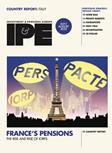Public pension and sovereign wealth funds aim to invest more in property and infrastructure over the next two years, according to a new survey.
Having been the fastest-growing portion of sovereign wealth fund (SWF) and public pension fund portfolios in recent years, real assets such as property and infrastructure are set to take up even larger slices of investors’ allocations.
In its latest Global Public Investor report, London and Singapore-based think tank OMFIF said 70% of the 750 global public investors it surveyed planned to increase their infrastructure investments over the next 12-24 months – and none planned to decrease.
Real estate was the next most popular asset class for future allocations, with almost 45% of pension funds and SWFs planning to increase their investments. However, 12% said they were planning to reduce property investments in this period.
This planned reduction was mostly led by institutions with large allocations to real estate that have seen the value of their investments grow over recent years, OMFIF said in the report.
“Most said they intend to reinvest the proceeds in new real estate projects,” it said. “Value-add and opportunistic projects, which offer greater potential for value appreciation and are less expensive than prime real estate in core locations, are the main targets for these acquisitions.”
Between 2009 and 2017, SWFs and public pension funds’ combined property allocation climbed by nearly 120%, OMFIF said, citing a separate 2018 report it produced in conjunction with BNY Mellon. Infrastructure grew by 165%, albeit from a lower base. These investors had an average allocation to real estate of 9.3%, and 3.6% to infrastructure.
The Global Public Investor report found that total assets had grown by $2.5trn (€2.1trn), or roughly 7.3%, to reach $36.2trn.
This was the largest such increase in the five years since it started tracking the assets of the 750 institutions in its survey, OMFIF said. It cited the global economic recovery and upturn in equity markets as reasons for the asset surge.

























No comments yet